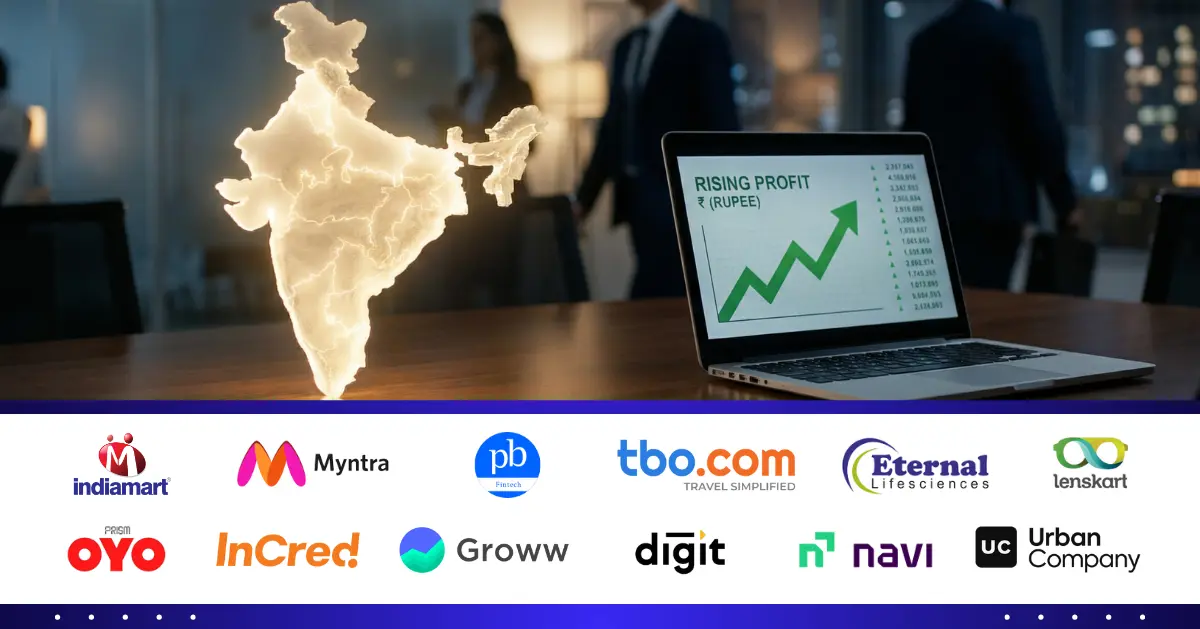
Introduction
In today’s competitive landscape, e-commerce growth is no longer just about launching an online store; it’s about building a scalable business that continuously adapts to market changes. Companies like Amazon and Shopify reported an average e-commerce growth rate of over 20% annually, demonstrating that online sales and business expansion require strategic execution (Statista, 2024). But what exactly fuels this e-commerce growth?
Imagine a small business selling handmade candles on Instagram. Initially, they relied on organic traffic, but after implementing advanced marketing strategies, leveraging influencer partnerships, and optimizing their checkout process, their online sales skyrocketed by 300% within six months. This is the power of e-commerce growth—a well-calibrated strategy that aligns marketing strategies with customer demand and digital trends.
What is E-commerce Growth?
E-commerce growth refers to the sustained increase in online sales, revenue, customer base, and market share within the digital commerce space. According to a 2023 McKinsey report, global e-commerce growth is projected to reach $6.3 trillion in sales by 2024. Key factors driving this expansion include technological advancements, changing consumer behaviors, and innovative marketing strategies.
A business’s e-commerce growth can be measured using various key performance indicators (KPIs), such as customer acquisition rates, average order values, website traffic, and conversion rates. Companies that focus on data-driven decision-making often experience business expansion faster than their competitors. For instance, brands leveraging artificial intelligence for personalized recommendations witness a 35% increase in online sales (Forbes, 2024).
Additionally, mobile commerce (m-commerce) plays a crucial role in e-commerce growth. A study by eMarketer (2024) revealed that online sales via mobile devices accounted for 73% of total e-commerce revenue. The shift toward mobile-friendly shopping experiences has forced businesses to optimize their platforms for seamless transactions. Companies that fail to adapt to mobile commerce trends risk losing a significant portion of potential customers.
Another significant factor contributing to e-commerce growth is the integration of omnichannel retail strategies. Businesses that sell their products across multiple platforms—such as their own website, marketplaces like Amazon and Flipkart, and social media channels—experience higher business expansion rates. According to a report by Harvard Business Review, omnichannel retailers generate a 60% higher customer lifetime value than single-channel sellers.
Emerging payment solutions also fuel e-commerce growth. With the rise of digital wallets, UPI transactions, and Buy Now, Pay Later (BNPL) services, customer convenience has significantly improved, leading to higher conversion rates. Businesses that offer diverse payment options see a 25% boost in online sales compared to those that rely solely on traditional credit and debit cards (Statista, 2024).
Cross-border e-commerce is another driver of business expansion. Companies that extend their reach beyond domestic markets witness a 40% increase in revenue. Platforms like Shopify and BigCommerce have enabled small businesses to sell internationally by providing automated tax calculations, multi-currency support, and localized customer experiences. The global cross-border e-commerce market is expected to grow at a CAGR of 27% by 2027, further emphasizing its importance in e-commerce growth.
Moreover, customer retention strategies contribute significantly to e-commerce growth. While acquiring new customers is essential, retaining existing ones is more cost-effective and profitable. Implementing loyalty programs, personalized email marketing campaigns, and exceptional customer service can increase repeat purchase rates by 30% (HubSpot, 2024). Brands that focus on long-term relationships rather than one-time transactions experience sustainable business expansion.
Sustainability and ethical business practices are becoming increasingly important in e-commerce growth. Consumers today prefer brands that adopt eco-friendly packaging, ethical sourcing, and carbon-neutral shipping methods. A Nielsen report states that 80% of consumers are willing to pay a premium for sustainable products. Businesses that align their operations with these values not only enhance their brand reputation but also drive significant online sales growth.
In summary, e-commerce growth is a multifaceted process influenced by technology, consumer preferences, mobile commerce, omnichannel retailing, digital payments, global expansion, customer retention, and sustainability. Companies that strategically incorporate these elements into their business models are better positioned to achieve long-term success in the digital marketplace.
Key Factors Driving E-commerce Growth
Several factors contribute to e-commerce growth, ensuring that businesses remain competitive:
- Digital Adoption – Over 75% of consumers prefer digital shopping over physical stores (Forrester, 2024).
- Mobile Commerce Boom – 73% of online sales now come from mobile devices (Statista, 2024).
- Personalization & AI – AI-driven recommendations increase e-commerce growth by 35%.
- Secure Payment Gateways – Faster and secure transactions enhance customer trust, boosting business expansion.
- Cross-border E-commerce – Businesses expanding internationally see a 40% increase in revenue.
- Sustainability Initiatives – 80% of customers prefer eco-friendly brands (Nielsen, 2024).
- Faster Logistics & Delivery – Same-day delivery improves customer satisfaction by 50% (Deloitte, 2024).
- Social Commerce – Platforms like Instagram and TikTok contribute to a 30% rise in online sales (Hootsuite, 2024).
Strategies to Scale an E-commerce Business
1. Leverage Multi-Channel Selling
Expanding beyond a single platform drives e-commerce growth exponentially. Brands selling on their website, Amazon, Flipkart, and social media experience online sales growth of over 60% (eMarketer, 2024).
2. Optimize for Mobile Commerce
With 73% of purchases happening via mobile, ensuring a seamless mobile UX accelerates e-commerce growth.
3. Data-Driven Digital Marketing
Performance-driven marketing strategies, such as paid ads, SEO, and influencer marketing, increase conversions by 120% (Google, 2024).
4. Streamline Checkout & Payment Processes
A one-click checkout reduces cart abandonment rates by 45%, significantly boosting e-commerce growth (Baymard Institute, 2024).
5. Utilize Customer Retention Strategies
Loyalty programs and email marketing campaigns drive repeat online sales, ensuring long-term business expansion.
Role of Digital Marketing in E-commerce Expansion
Digital marketing plays a crucial role in e-commerce growth by driving traffic, increasing brand awareness, and improving conversion rates. Effective marketing strategies leverage multiple channels, including search engine optimization (SEO), paid advertising, social media marketing, content marketing, and email marketing.
1. Search Engine Optimization (SEO) for Organic Growth
SEO remains one of the most cost-effective marketing strategies for long-term e-commerce growth. Studies show that 53% of all website traffic comes from organic search (BrightEdge, 2024). By optimizing product pages, implementing structured data, and improving site speed, businesses can increase their online sales without relying solely on paid ads.
2. Pay-Per-Click (PPC) Advertising for Instant Visibility
PPC campaigns, including Google Ads and Facebook Ads, generate instant traffic. Research indicates that businesses earn an average of $2 for every $1 spent on Google Ads (WordStream, 2024). By targeting high-intent keywords, e-commerce stores can drive significant e-commerce growth through paid search and social media ads.
3. Social Media Marketing and Influencer Collaborations
Social media platforms such as Instagram, TikTok, and Facebook have transformed online sales dynamics. A study by Hootsuite (2024) found that 55% of consumers purchase products they discover on social media. Collaborating with influencers can further amplify business expansion, as micro-influencers drive 60% higher engagement rates than traditional ads.
4. Content Marketing and Blogging
Content marketing is another key driver of e-commerce growth. Businesses that publish regular blogs generate 67% more leads than those that don’t (HubSpot, 2024). High-value content, such as product guides, case studies, and industry insights, builds credibility and enhances online sales.
5. Email Marketing for Customer Retention
Email marketing remains one of the highest ROI marketing strategies, with an average return of $42 for every $1 spent (DMA, 2024). Personalized email campaigns, abandoned cart reminders, and loyalty program emails improve customer retention and contribute to long-term e-commerce growth.
6. Data-Driven Marketing & AI Integration
AI-driven personalization increases e-commerce growth by optimizing user experiences. Brands using AI-powered chatbots and recommendation engines see up to a 35% boost in online sales (Forbes, 2024). By leveraging customer data, businesses can create highly targeted campaigns that lead to higher conversion rates.
7. Video Marketing & Live Shopping
With the rise of video marketing, platforms like YouTube, Instagram Reels, and TikTok are major contributors to business expansion. Studies show that videos increase conversions by 80% (Wyzowl, 2024). Live shopping events on social media also drive engagement and immediate online sales.
In conclusion, digital marketing serves as the backbone of e-commerce growth. Implementing an integrated strategy that combines SEO, PPC, social media, content marketing, email marketing, and AI-driven personalization ensures sustainable business expansion in the competitive online marketplace.
Challenges in E-commerce Growth and How to Overcome Them
1. High Competition
Solution: Invest in unique branding and personalized marketing strategies.
2. Cart Abandonment
Solution: Implement automated reminders and seamless payment options.
3. Supply Chain Issues
Solution: Diversify suppliers and integrate AI for demand forecasting.
Future Trends in the E-commerce Industry
- Voice Commerce Growth – Expected to reach $40 billion by 2025.
- AR Shopping Experiences – 70% of brands are integrating AR for immersive shopping.
- Sustainable E-commerce – 80% of consumers prefer eco-friendly brands.
Conclusion
E-commerce is evolving at an unprecedented rate, with digital transformation being a key driver. The projected e-commerce growth of 9.6% CAGR highlights the necessity of optimized marketing strategies and technological adoption. Businesses embracing data-driven online sales strategies will lead the future market, generating multi-million-dollar revenues.
RegisterKaro simplifies business expansion for e-commerce startups by handling legal registrations, compliance, and tax filings. A legally structured business ensures trust and credibility, accelerating e-commerce growth.




